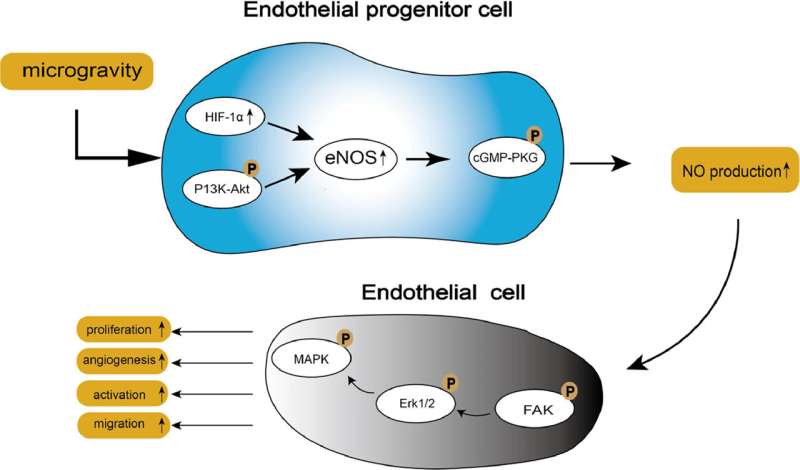This article has been reviewed according to Science X's editorial process and policies. Editors have highlighted the following attributes while ensuring the content's credibility:
fact-checked
trusted source
proofread
Cells grown in microgravity show 3D structures that could be used in medicine

Humanity is on the verge of entering a new era of space exploration, with the Artemis III mission planning to return humans to the moon in 2026, for the first time in 50 years. Not only will Artemis see a woman and a person of color walk on the lunar surface for the first time, but the week-long mission to the south pole of the moon will begin a period of longer and longer stays in space.
This means that the impact of space environments on human health needs to be thoroughly investigated. This includes understanding the effect of "weightlessness" due to the microgravity found in space on physiology. While this seems to be negative, scientists are also investigating the impact of microgravity on cells, which suggests that microgravity can be advantageous.
In a paper published in the journal Life Sciences in Space Research, Hong-Yun Nie of PLA-Peking University Teaching Hospital, Beijing, China, and colleagues review recent progress in understanding the impact of microgravity on the biological behavior of various types of stem cells: self-renewing cells that can differentiate into different cell types.
Cultures of stem cells grown in microgravity seem to exhibit the formation of 3D tissue-like structures, which closely resemble some aspects of human physiology. This suggests a wide range of potential applications for microgravity as a tool in the field of space life science, opening up entirely new avenues for tissue engineering and regenerative medicine.
The human-tissue-like 3D cell structure grown in microgravity could be used for applications like drug testing and for screening potential health risks. The authors add that artificial cartilage, blood vessels, and other organs generated under microgravity conditions are of high quality, seeming to avoid some of the immune problems caused by the use of scaffolds in traditional tissue engineering.
The authors point out that future research should explore the effects of time spent in microgravity and the frequency of exposure on tissue formation. In addition to this, they say that signaling pathways by which microgravity affects interactions between cells have yet to be identified.
More information: Hong-Yun Nie et al, The effects of microgravity on stem cells and the new insights it brings to tissue engineering and regenerative medicine, Life Sciences in Space Research (2024). DOI: 10.1016/j.lssr.2024.01.001
Provided by SciencePOD





















